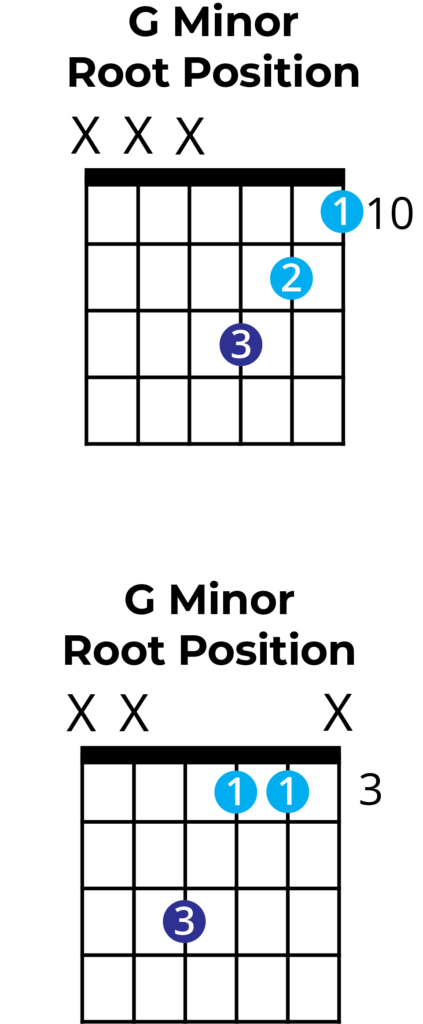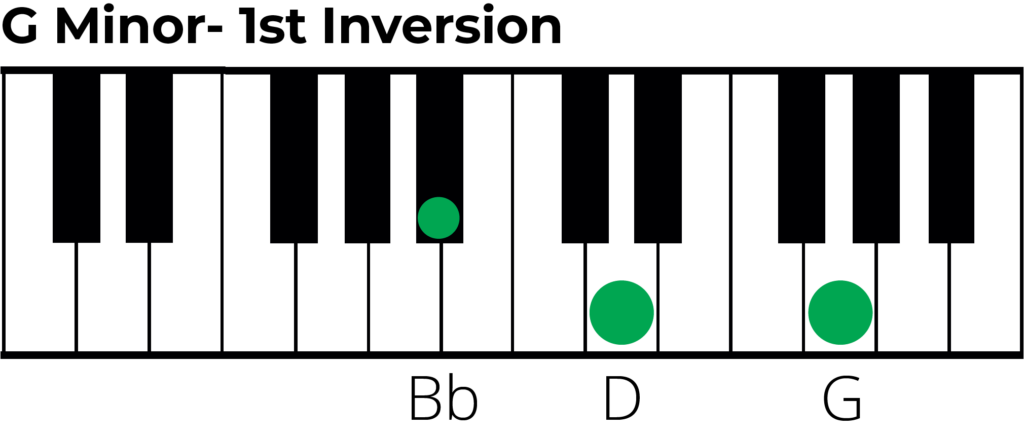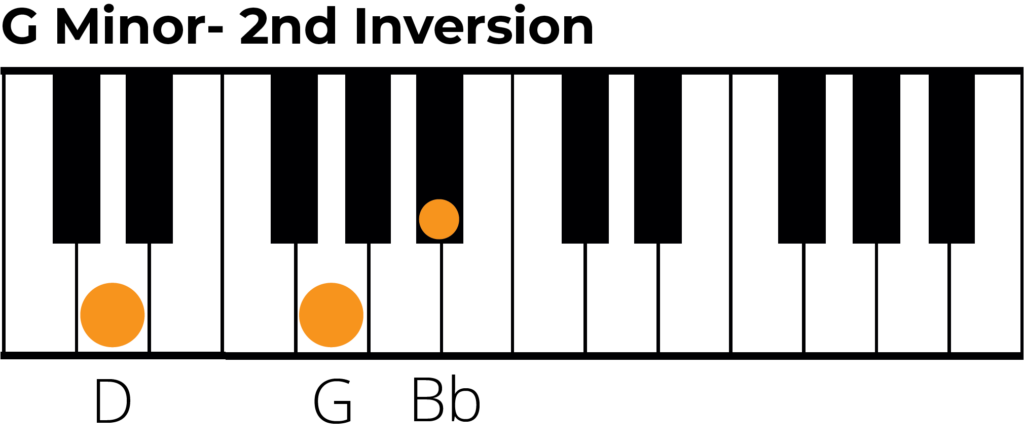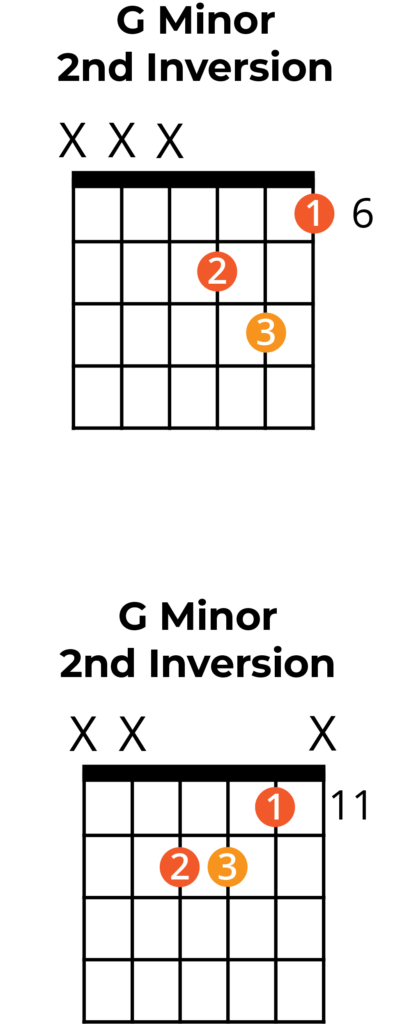In this article you’ll learn how to construct the G minor triad as well as how to play it on piano and guitar.
We’ve also included sections on inversions for those that want a deeper understanding. Lastly, listen to some examples of popular songs that featured this triad.
Root, 3rd and 5th
The G minor triad is formed of the 1st, flat 3rd and flat 5th of the G major scale.
- G – root note
- Bb – minor 3rd above the root
- D – perfect 5th above the root
Here is the triad written on the stave in the treble and bass clef.


Before you read on make sure that you have a basic understanding of intervals. Intervals are vital for understanding how triads are built. Check out our guide to major, minor and perfect intervals for more on this.
G Minor Triad on Piano
Below you can see how to play this triad on the keyboard or piano. This pattern of notes could also be played starting on any G natural note.
However, the order of the notes must be the same:
- G – lowest note
- B flat – middle note
- D – highest note
This is called ‘root position’.

G Minor Chord on Guitar
There are two simple positions that you can use to play a G minor chord on guitar. Both positions can also be slide up or down the neck to play different minor triads.

1st Inversion
A 1st inversion is where we take a triad but we start on the second note, which in this case is B flat. We still keep the D above, but then the G (or root) become the highest note.
This way of rearranging a triad gives us a different sound as the relative pitches of the three notes has changed.
- B flat – lowest note
- D – middle note
- G – highest note

1st inversion on Piano
On the piano we can play the 1st inversion of a G Min triad by starting on a B flat. They play the D above and the G above this.

1st Inversion on Guitar
Below are the most common shapes for playing a G minor chord in the 1st inversion. Remember that we can only use certain shapes are the pitches of the three notes are important.

G Minor Triad 2nd Inversion
A 2nd inversion is where we take a triad but we start on the third note, which in this case is D natural. We still keep the G above this as we did from the 1st inversion. Then the Bb becomes the highest note in the chord.
- D – perfect 5th (lowest note)
- G – root note (middle note)
- Bb – minor 3rd (highest note)
We could construct a 2nd inversion starting on any D note in any octave. The only thing that must stay the same is that the we use the G above and the Bb above that.

2nd inversion on Piano
On the piano we can play the 2nd inversion of a G Min triad by starting on a D natural. They play the G above and the Bb above this.

2nd Inversion on Guitar
Below are the most common shapes for playing a G minor chord in the 2nd inversion. Remember that we can only use certain shapes are the pitches of the three notes are important.

Triads from the G Minor Scale
By looking at the G Minor scale we can actually make triads built on each note and only using notes from G minor. Below you can see a list of each triad we will create be starting on different notes of the scale.
- G Minor
- A Dim
- Bb Major
- C Minor
- D Minor
- Eb Major
- F Major

Famous Songs in G Minor
Here’s 3 famous examples of songs in a G Minor key. For this reason, they use G Minor triads, as the root note chord, prominently in their chord progressions.
‘I shot The Sheriff’ – Eric Clapton
Clapton’s cover of the Bob Marley classic “I Shot the Sheriff” is a classic rock and reggae fusion track. A great combination of infectious rhythms and Clapton’s masterful guitar work.
‘Hall of Fame’ – The Script
‘Hall of Fame’ by The Script is an inspirational pop-rock anthem. Its uplifting lyrics and memorable melody have cementing its status as a motivational favourite in contemporary music.
‘Retrograde’ – James Blake
“Retrograde” by James Blake is a captivating and experimental electronic track that showcases the artist’s unique blend of soulful vocals and intricate production.
What’s next….?
- Learn how to construct the G Major triad
- Swat up on your chord knowledge with our complete guide to chords.
